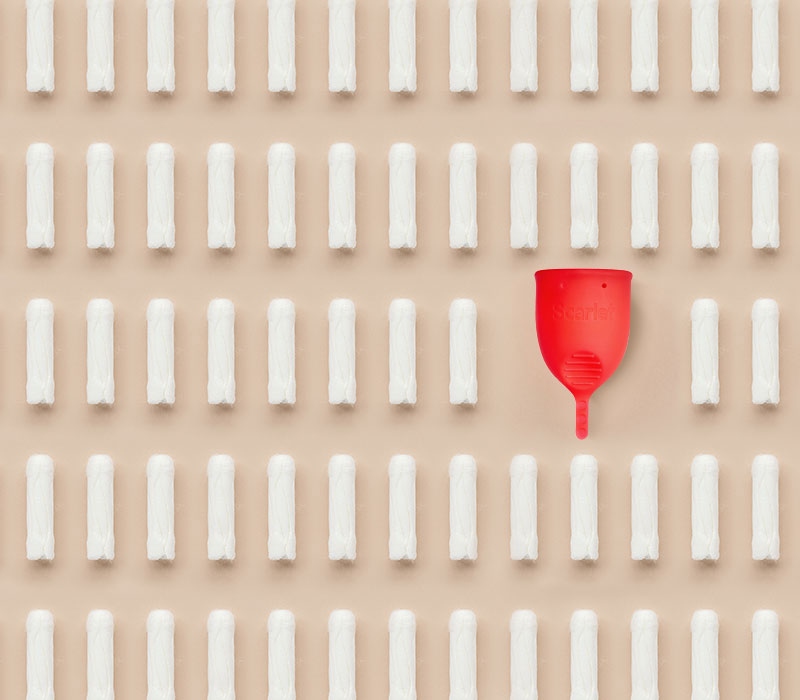As we learn more about menstrual health, concerns over what’s actually in our period products are growing. Recent headlines have raised alarms about harmful chemicals found in mainstream tampons and pads - ranging from toxic metals to "forever chemicals" like PFAS.
Here’s the thing: not all period products are created equal. Organic and non-organic options come with key differences, and while we’re not here to shame anyone for their choices, we do believe in making informed ones. Whether you reach for a tampon one day and period undies the next, understanding what’s inside matters. Because when better options exist, why settle for anything less? Let’s break it down.
What’s in Your Tampons?
Investigations have uncovered some concerning findings about certain tampon brands, especially non-organic ones. Toxic metals like lead, arsenic, and cadmium have been detected in some mainstream products, raising serious health concerns.
- Lead: This heavy metal is linked to a range of health issues. Even low levels can interfere with development in kids, while long-term exposure can harm your heart, kidneys, and reproductive system.
- Arsenic: Known for its toxic effects, arsenic is linked to cancer and developmental disorders. While some tampons may contain only trace amounts, what are the long-term risks of repeated exposure?
- Cadmium: Often found in batteries, cadmium exposure can lead to kidney damage and bone loss - not something you want near such a sensitive area.
Not all tampons are created equal. Organic cotton tampons, like those from Femme Organic, skip the nasty additives and pesticides used in conventional cotton farming. When choosing tampons, check for organic certification, sourcing transparency, and third-party contaminant testing.
The “Forever Chemicals” in Pads
And it’s not just tampons. Recent studies found per- and polyfluoroalkyl substances (PFAS) in some menstrual pads. Often dubbed “forever chemicals,” PFAS are synthetic and stick around in the environment for ages.
- Health Risks: PFAS are linked to immune issues, hormonal chaos, and a higher risk of certain cancers. Their ability to linger in our bodies and the environment raises serious concerns.
- Regulatory Headaches: Many brands still use PFAS to enhance moisture-wicking and stain resistance. Despite growing awareness, loopholes in regulation mean these chemicals can still end up in your products.
This is why choosing PFAS-free, organic options matters. Brands that focus on certified organic pads and liners avoid synthetic treatments, harmful dyes, and chemical additives, giving you a cleaner, safer choice.
Organic vs. Non-Organic: Not All Period Products Are Created Equal
Not all period products are created equal, and the differences matter when it comes to organic versus non-organic options. We’re all about choice - some days, you might reach for period undies, and on others, a tampon might be what works best. That’s totally okay. The key is making mindful choices and knowing what’s in your products.
- Why Organic? Organic tampons and pads, like those from Melbourne brand Femme Organic, are free from chlorine bleach, synthetic fragrances, and pesticides - things you don’t want near your most absorbent parts.
- Check the Labels: Don’t just grab whatever’s on the shelf. Read the back of the pack. Look for certifications that guarantee organic, PFAS-free products, and free from unnecessary additives.
-
Mix It Up: Your period routine doesn’t have to be one-size-fits-all. Try a mix of organic tampons, period underwear, cups, or pads. The goal is to find what works for you without compromising your health.
Making Smarter Choices
With the alarm bells ringing about toxic metals in tampons and forever chemicals in pads, it’s time to take charge of your menstrual health. Here’s how:
- Get Educated: Keep tabs on what’s in your menstrual products. Read labels and find brands that are open about their ingredients and safety.
- Try Alternatives: Explore menstrual cups, reusable underwear, or organic cotton products that are less likely to pack harmful chemicals. These options can be safer and kinder to the planet.
-
Push for Change: Get behind movements that demand stricter regulations on chemicals in period products. Urge brands to adopt safer practices and advocate for transparency in ingredient sourcing.




